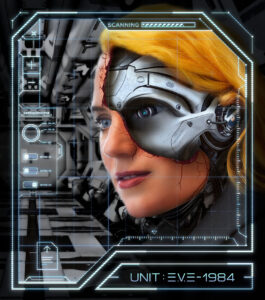How to read signs when you can’t read words (A look at Visual Communication methods)

Imagine what you would do if you woke up one day and couldn’t read. Letters on shop signs were nonsense to you. The words of your favourite novel were inane markings, no more rational than scratches on a fence.
I didn’t have to imagine it. And that’s how my intrigue of visual communication — of graphic design — was born.
A car accident and ensuing head injury resulted in my being unable to read, for a time. (Nor to do much else, but that’s not relevant to this post.) My brain knew how written language worked, and my eyes knew how to transmit information through the optic nerve to my occipital lobe…but there was a transmission error somewhere between the two points. Until relevant neurological phonelines were re-established, I couldn’t parse the symbols I was seeing. I could physically identify letters, but I couldn’t understand what they were saying.
So how can you read, when you can’t understand text?
By reading the rest. By reading what’s around it. What’s behind it.
Read the colour
Is it an energetic colour, like red, or orange? That would fit an advertisement for a limited-time, low-interest cash loan. An act-now-or-lose-the-opportunity kind of thing.
Is it demure, like navy, gray, or even black and white? Law offices prefer those. Those colours are grounded; dependable; responsible.
Is it bright? Clear and contrasting? If there are a lot of them, it’s probably something for kids. A playcentre, or kindergarten.
Read the shape
Those letters you can’t read — are they slanted? Leaning letters create more movement; more urgency. They’re used for emphasis. But they’re informal. Like a little kid excitedly bouncing up and down on a plastic picnic chair. If they’re accompanied with bright colours, that supports the idea of a playcentre.
Or, those letters you can’t read — are they straight and stoic? Such letters expect you to take their message seriously; with rational consideration. A cash-loan advertisement would use this. Customers don’t trust excited kids bouncing on picnic chairs with their money, after all. So those offering a loan service need to look serious. Trustworthy. (But they also want you to act now, so may use energising colours to transmit that urgency, instead.)
Read the sizes
What parts of the ad or sign are bigger? This is what they want you to look at first. It’s what they expect will hook you. Banks tend to have posters with giant numbers on them, presumably indicating some discount or benefit — but you can’t read that, so you look at the rest.
Is there an illustration? What is that communicating? Where is it? Which brings us to…
Read the placement
What a thing is — a word or a picture — is no more signficant than where it is.
Is the illustration tucked away in the corner? It probably has only passing relevance to the poster’s message.
Or is it prominent? Front and centre? It’s likely a lot more relevant. Not being able to read the words on this poster is probably not a hinderance to understanding what they’re talking about.
Read the direction
Do your eyes instinctively know what part of the design to look at next? Or are they bouncing all over it like they’re stuck in a pinball machine?
If the poster ingredients are leading your eye, skip to the end of the trail. (It tends to be at the bottom-right of a page.) Is it a logo? Then the poster’s probably a product advertisement of that company. They want to build your anticipation about how this product or service would make your life so much better, before they show you who can make these dreams of yours come true.
If your eyes are pinballing over the page, the provider isn’t as important as what they’re providing. They want you to get enlivened; engaged; hooked into the offering until your brain is excitedly looking for the answer to, ‘Where can I get this?’ or ‘When is this happening?’ This may be a poster for an upcoming concert, or a travelling circus coming through town.
The combined role of all these things would later be known to me as ‘visual hierarchy’, but at the time, they were just essential information. The only information I could ‘read’. But I was surprised at just how much they told me.
People who can read underestimate the significance of all these other visual elements. It’s easy to ignore the rest of printed communication as unnecessary, a distraction, but it remains just as communicative even when you’re unaware of it. It’s the parliamentary advisor that nobody notices because he doesn’t speak in public and he doesn’t look like a powerful hero…but he quietly rules the country, none-the-less.
I’ve since regained my ability to read (along with everything else), but my experience of being without it left me with a respect and appreciation for the other ways we can communicate in printed formats.
First it was an intrigue. Then a fascination. And now it’s my business.
How much do you notice of what’s being ‘said’, behind the words you see every day? Do you think you’ll look at it any differently, now?


20 Feb 2018
Fascinating! I can’t imagine not being able to read, it being such a central part of my life (I gave up reading for a week once as an exercise, and it was not a good week). Being something of an automatic reader, I tend to miss all this other information – but now I will try to keep my eyes open.
20 Feb 2018
Well-intentioned family had brought me books-on-CD to listen to instead, in the beginning, while I was still in hospital…but that turned out to be futile, too. By the time the disc got to the second minute, I’d forgotten what it had read in the first one — and I didn’t know of any books-on-CD that are less than a minute long! (Wouldn’t have thought of them, even if I had. My hospital room was the only part of the world that existed, at that point.)
I’d be interested to hear about your observations of text-less information, now that you’re looking out for it. 🙂